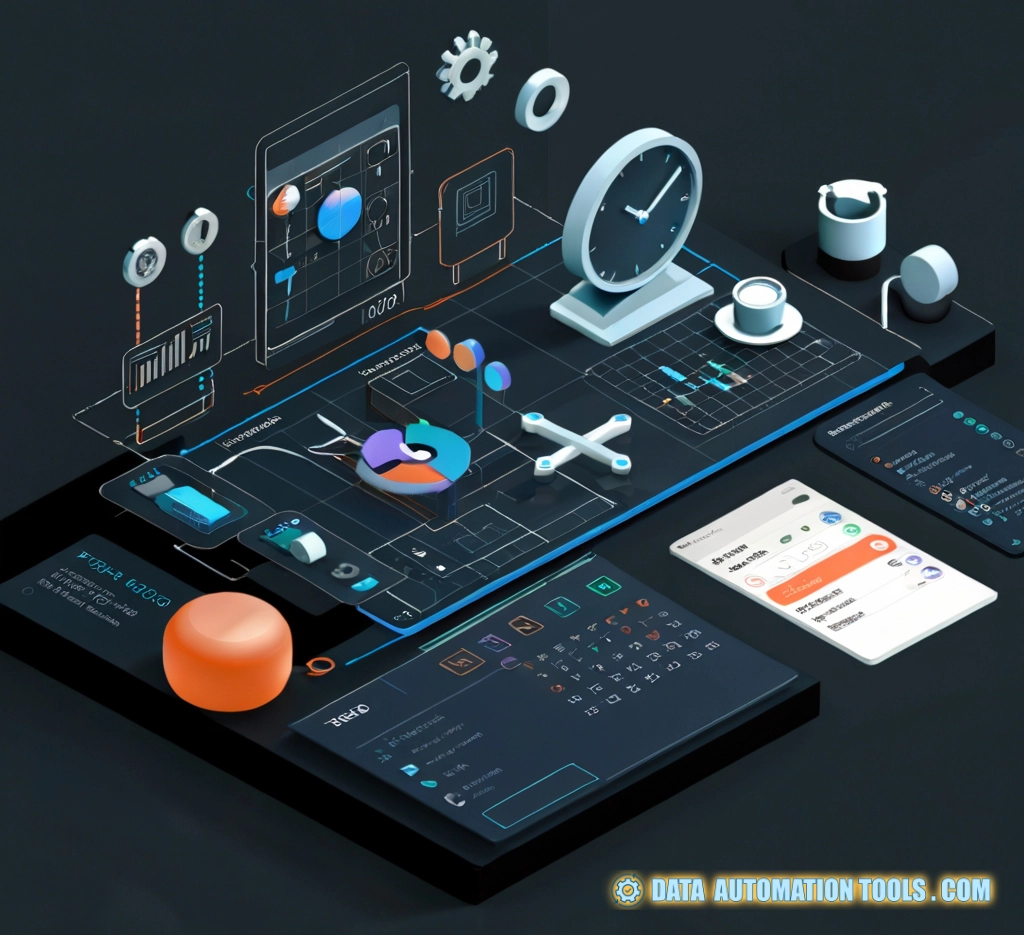Data automation tools sit at an increasingly central point in modern development work, bridging the gap between raw, messy inputs and reliable, structured outputs. As developers, we’ve all wrestled with repetitive, error-prone manual processes—copying CSVs between systems, running nightly batch jobs by hand, or writing quick-and-dirty scripts that get the job done once but leave no sustainable path forward. Data automation tools exist to remove those bottlenecks and bring repeatability, scalability, and clarity to tasks that otherwise consume far too much developer bandwidth.

In essence, A data automation tool is designed to automate repetitive data tasks or workflows — like ingesting files, triggering transformations, syncing APIs, or scheduling jobs — often with minimal manual intervention. Examples include:
- Airflow, Prefect, Dagster: orchestrate pipelines and manage dependencies.
- Zapier, n8n, Fivetran: automate cross-service data movement.
- dbt: automates transformations within the warehouse.
These tools focus on workflow management, scheduling, error handling, retries, notifications, and state tracking. Their purpose is to run things automatically and reliably according to logic or triggers.
So: Data automation = orchestrating or triggering processes automatically. At their core, these tools orchestrate how data moves, transforms, and integrates across systems. Think of them as pipelines: ingest data from multiple sources (databases, APIs, log files, even webhooks), apply structured transformations (cleaning, normalization, enrichment), and deliver the results into target systems (data warehouses, BI dashboards, ML pipelines). The “automation” piece is what makes them so powerful—you don’t just execute a process once, you define a repeatable workflow that runs on schedule, on trigger, or continuously. This frees you to focus on engineering the logic, not babysitting its execution.
For developers, the appeal of automation tools lies in three main traits: abstraction, reliability, and extensibility. Abstraction means not having to reinvent cron jobs or write ad hoc scripts for every integration—you can use declarative configuration, visual DAGs, or code-driven frameworks to express pipelines. Reliability means these tools handle retries, logging, and error alerts out of the box, so you’re not woken up at 2 a.m. to discover a silent failure that broke downstream analytics. Extensibility ensures you can plug in custom logic: Python operators in Apache Airflow, Node-based scripts in n8n, or dbt models running SQL transformations—all without leaving the automation ecosystem.
The ecosystem is rich and varied. On one end, you have developer-first, open-source orchestrators like Airflow, Prefect, and Dagster, where you build workflows as code, test them like code, and deploy them like code. These shine in environments where control, customization, and versioning are non-negotiable. On the other end are low-code/no-code automation platforms like Zapier, Integromat (Make), and Tray.io, which democratize integration tasks by exposing visual interfaces and prebuilt connectors. In between, you’ll find specialized transformation engines like dbt (SQL-centric, transformation-as-code) and ELT services like Fivetran or Stitch, which standardize ingestion but leave transformation to the warehouse layer.
Choosing the right tool depends heavily on your context. If you’re building internal data platforms or maintaining mission-critical production workflows, orchestration frameworks like Airflow or Prefect may give you the control you need. If your team’s priority is speed and agility—say, wiring up Salesforce to Slack alerts—then no-code platforms accelerate delivery. In practice, many organizations adopt a hybrid approach: ELT for ingestion, dbt for transformation, and an orchestrator to tie everything together.
From a developer’s perspective, the biggest mindset shift is treating automation pipelines as software assets rather than throwaway utilities. That means applying the same rigor: version control, CI/CD integration, testing, monitoring, and documentation. The payoff is enormous. Proper automation doesn’t just save time—it enforces consistency, reduces human error, and creates transparency around how data flows through your systems.
Ultimately, data automation tools are about leverage. They let you multiply your output by codifying repetitive tasks into reliable, reusable workflows. For developers who care about building resilient systems, they’re less of a luxury and more of a foundational layer of modern software engineering.
Which Data Automation Tool is Right For You?
Choosing the right data automation tool depends on where your bottlenecks are and what kind of control you need. If your main challenge is data orchestration—say, coordinating dozens of interdependent jobs across databases and APIs—then developer-first frameworks like Apache Airflow or Prefect are strong candidates. Airflow offers power and maturity, while Prefect provides a cleaner API and easier setup, ideal if you want orchestration without the overhead of managing heavy infrastructure.
If your bottleneck is data ingestion, where pulling from multiple SaaS tools or databases is eating up developer hours, services like Fivetran or Stitch automate that layer. They’re plug-and-play, handling schema changes and incremental loads with minimal engineering effort.
For data data transformations, especially in SQL-centric shops, dbt is hard to beat. It brings version control, testing, and modularity to warehouse logic, making transformations more transparent and reliable.
If your needs are lighter-weight—integrating SaaS apps, syncing leads, automating notifications—then low-code platforms like Zapier or n8n might be the right fit. They let you wire systems together quickly, though with less flexibility for heavy engineering tasks.
In practice, most teams mix tools. The “right” tool is the one that matches your workload, resources, and tolerance for complexity.
